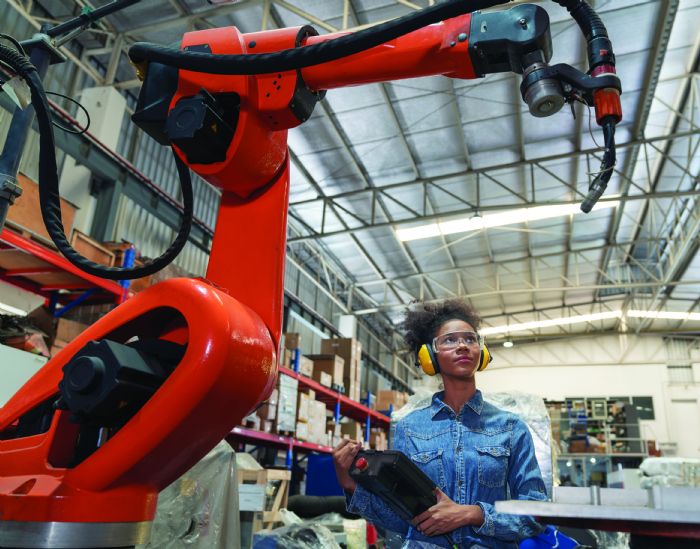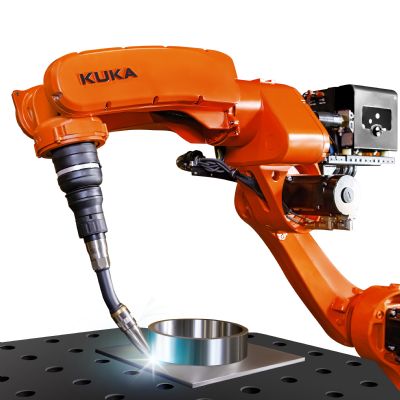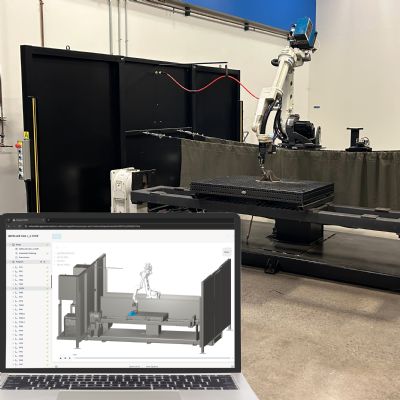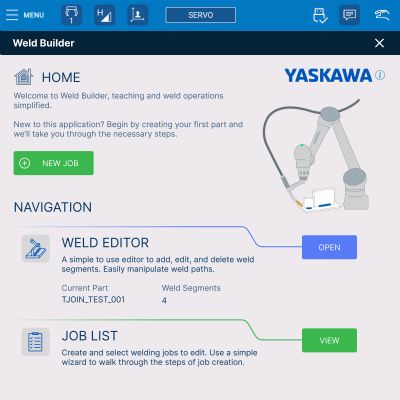Q: You say that there’s no room for safety complacency. Please expand on that.
Mangold: Previous safe operation is not a substitute for engineering reasoning. Anytime a metal former makes a change to robotic hardware or control structure it should perform a risk assessment. When investigating an accident, I first check for changes, then ask if the process has been validated. If the answer is “yes,” I then ask, “What failed?” And if “no,” I then ask, “Why not?”
Q: How should metal formers know what safeguards to employ?
Mangold: I recommend a structured risk-assessment process that describes the application, itemizes the equipment, lists potential personnel-safety hazards, analyzes the risks of each hazard, selects mitigation tools, verifies the mitigation and documents the necessary steps. For guidance on how to develop such a process, readers can turn to AWS D16.3, Risk Assessment Guide for Robotic Arc Welding, which walks through the elements of the process, provides terms and definitions, offers guidance for safeguarding, and even includes a sample risk-assessment form.
Q: Are there any tricks of the risk-assessment trade?
Mangold: There is no substitute for going through the formal process. After that, I engage in “what-if” scenarios. Another technique I use: stripping an automated-welding setup of all of its safeguards and then building a risk assessment backward based on the safety requirements of the processes. I then add safeguards and produce a parallel report to determine the cost of those safeguards and evaluate their effectiveness. I employ this process during system inception as well as after making any changes.
Q: What strikes you about the rise of cobots for automating the welding process?
Mangold: I’ve spent my entire career working to make robots quicker, more resilient and accurate, and able to carry higher payloads. Cobots reverse all of those advances so that humans can work alongside. However, just because a metal former can install a cobot and be up and running in hours doesn’t mean that it can avoid due diligence for safe operation, and that can take days or weeks.
Q: Does the AWS D16.3 standard cover cobots?
Mangold: Yes, Table 1 of section 5.5.1 of the standard describes three robotic operating subclassifications based on the robot’s payload, rotational torque of any auxiliary equipment, and the velocity of the robot or any other moving equipment in the system. Cobots are classified as “low-energy robots.”
Q: Have you investigated any safety incidents with cobots?
Mangold: Yes, two of them, and neither were welding-related or fatal. One case involved a maintenance worker in an adjacent cell and the other involved someone performing maintenance on the cobot system. In both cases the cobot arms did not strike anyone; however, the ancillary, integrated machinery caused the accidents, and that is perhaps the hardest thing to convey to young or inexperienced technicians. Planning these cells requires consideration of the entire automation environment.
Q: In a nutshell, how can metal formers improve cobot safety?
Mangold: We tend to blame the operator, but what we really must do is remove incentives for unsafe activities. For example, a hot part by its nature will prevent people from grabbing it, but the only other incentive that an operator would have for grabbing a hot part is trying to beat the clock to win the cycle-time war. Metal formers seeking to be good corporate citizens take safety seriously. They employ a risk-assessment process as part of their standard manufacturing-analysis tools, and engineer systems to remove hazards. MF
View Glossary of Metalforming Terms
See also: American Welding Society (AWS) Headquarters
Technologies: Welding and Joining







 However, SMBs would be wise to proceed with caution when implementing robotic/cobotic welding cells, by first familiarizing themselves with the standards related to robotic welding. These standards, created by the American Welding Society (AWS), cover safety, system components, risk assessment, personnel, training and system testing.
However, SMBs would be wise to proceed with caution when implementing robotic/cobotic welding cells, by first familiarizing themselves with the standards related to robotic welding. These standards, created by the American Welding Society (AWS), cover safety, system components, risk assessment, personnel, training and system testing. 

